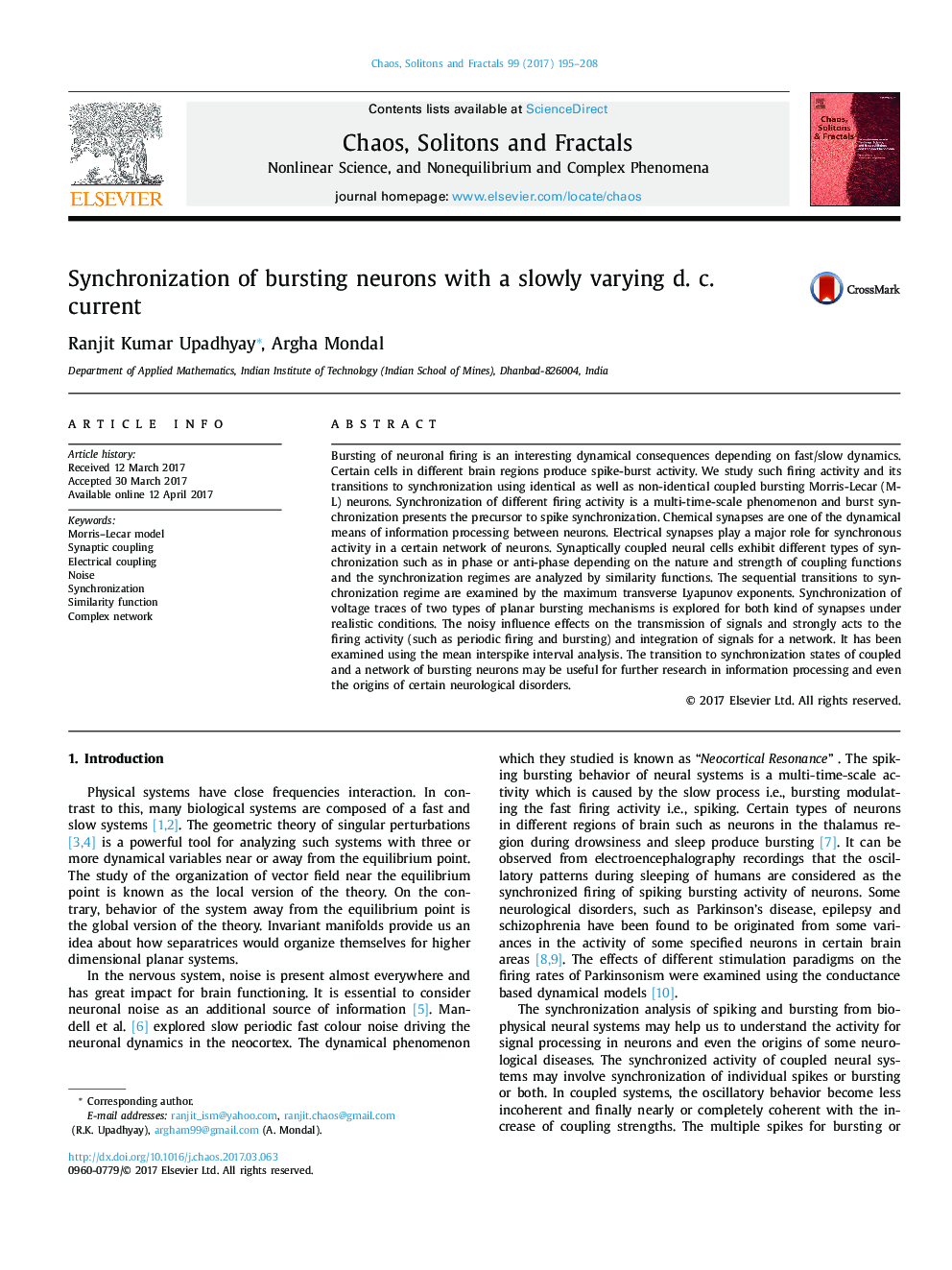| Article ID | Journal | Published Year | Pages | File Type |
|---|---|---|---|---|
| 5499673 | Chaos, Solitons & Fractals | 2017 | 14 Pages |
Abstract
Bursting of neuronal firing is an interesting dynamical consequences depending on fast/slow dynamics. Certain cells in different brain regions produce spike-burst activity. We study such firing activity and its transitions to synchronization using identical as well as non-identical coupled bursting Morris-Lecar (M-L) neurons. Synchronization of different firing activity is a multi-time-scale phenomenon and burst synchronization presents the precursor to spike synchronization. Chemical synapses are one of the dynamical means of information processing between neurons. Electrical synapses play a major role for synchronous activity in a certain network of neurons. Synaptically coupled neural cells exhibit different types of synchronization such as in phase or anti-phase depending on the nature and strength of coupling functions and the synchronization regimes are analyzed by similarity functions. The sequential transitions to synchronization regime are examined by the maximum transverse Lyapunov exponents. Synchronization of voltage traces of two types of planar bursting mechanisms is explored for both kind of synapses under realistic conditions. The noisy influence effects on the transmission of signals and strongly acts to the firing activity (such as periodic firing and bursting) and integration of signals for a network. It has been examined using the mean interspike interval analysis. The transition to synchronization states of coupled and a network of bursting neurons may be useful for further research in information processing and even the origins of certain neurological disorders.
Related Topics
Physical Sciences and Engineering
Physics and Astronomy
Statistical and Nonlinear Physics
Authors
Ranjit Kumar Upadhyay, Argha Mondal,
